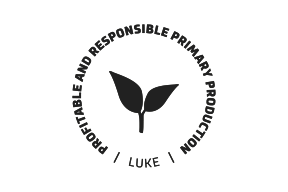From a container into a concept – the PaRAS method resolves challenges in recirculating fish farming
The container-based fish farming concept developed by the Natural Resources Institute Finland (Luke) is a cost-efficient option for environmentally friendly fish farming. The modular and versatile PaRAS method offers solutions for various challenges in recirculating fish farming.
Luke’s container-based fish farming concept has undergone further development, and the new concept is expected to improve energy efficiency and production capacity. In the second-generation prototype, the tank size can be scaled according to the needs of fish farms of all sizes.
“The Partial air-driven Recirculation Aquaculture System (PaRAS) concept has been tested for two years with excellent results. Compared to recirculating fish farming, the concept’s advantages include improved fish growth and a more predictable product quality, as well as lower investment and operating costs,” says Tapio Kiuru, principal specialist at Luke.
While shipping containers continue to be an integral part of the concept, now a single 12-metre container carries elements for two 96 m3 tanks to the installation site, whereas the volume of the original container-based tank delivered as a complete system was only 50 m3.
The element-based tank assembled using bolt joints is quick to install, and the elements include all the water treatment technology required. “The new concept also operates mixed-cell principle, in which the size of a single water treatment cell is 32 m3. Any number of these cells can be joined together according to needs. A three-cell tank with a volume of 96m3 is being tested at Luke’s facility in Laukaa during the 2022 farming season.
Reproducing the modular concept produces savings in design, component and procurement, as well as plant set-up costs.
Partial recirculation is an environmentally friendly option for fish farming
PaRAS tanks are ready-to-use partial recirculation aquaculture systems. The partial recirculation concept uses slightly more water than a recirculation aquaculture systems. However, partial recirculation is a significantly simpler and a often more affordable option for environmentally friendly fish farming than recirculation aquaculture systems.
The higher savings and the simpler management of water quality can be explained by partial circulation systems not having any bioreactors that carry high investment costs and maintenance of microbiological processes. This also reduces operating costs, as bioreactors consume high amounts of oxygen and require uninterrupted chemical pH adjustments. Furthermore, bioreactors release compounds that affect the taste of fish. These effects can be eliminated by means of freshening, but the high costs of freshening solutions are among key challenges in recirculating fish farming.
The new design improves the concept’s energy efficiency and production capacity. “Measured data can only be obtained after the trials conducted during the 2022 farming season, but we have already seen during the first part of the experiment that the maximum feeding in the 96 m3 PaRAS system is much higher than 100 kg a day. If operated round the year, the annual production of a tank of this size could easily be around 25 tons, which is significantly higher than the production capacity of current recirculation farms relative to the tank volume,” Kiuru says.
In recirculating systems, tanks only account for a third of the entire farm’s surface area. In the PaRAS concept, tanks can cover more than 80 per cent of the farm area, as the water treatment technology is integrated into the tanks, and no separate fasting tanks are required. The tank shape also makes the use of space more effective. In other words, farms may double their production capacity compared to farms using full recirculation technology.

Tank-specific functions enable partial circulation and improve effectiveness
PaRAS tanks are also ideal for the recirculation concept, with partial recirculation tanks connected to a bioreactor. In the PaRAS concept, aeration and flow systems and solids removal systems are tank-specific, allowing PaRAS tank units to be isolated from centralised biofiltration at any time without any impact on feeding or production. “When new fish are brought to a farm, a tank can run on partial recirculation separate from the rest of the farm, until the health of the new fish group has been ensured.” A tank unit can also be isolated from the bioreactor and switched to partial recirculation when fish are depuratedfor sale. In the partial recirculation concept, a purging phase is not always necessary , while in full recirculation systems fish must always be freshened before sales and this is usually done in partial recirculation systems
The PaRAS purging concept can also streamline and improve the profitability of recirculation systems, as fish do not need to be transferred to separate purging tanks and, unlike current practices, fish can also be fed during the purging phase. As a result, fish do not lose weight before sale, and fewer work stages are required. The tank shape also reduces the workload and improves the wellbeing of fish. In a rectangular tank, fish groups can be separated using partitions, and they can be guided by moving gates. This makes fish handling easier without causing any stress to other fish.
The new PaRAS concept was demonstrated to Finnish fish farmers at the summer event of the Finnish Fish Farmers’ Association on 24 August 2022. Fish farmers visited Luke’s fish farming plant in Laukaa, where they also observed the system in action. “It was great to see how interested the visitors were in this technology,” Kiuru says. “We are only at the halfway point, but it already seems that the project will continue and our cooperation will expand.”



